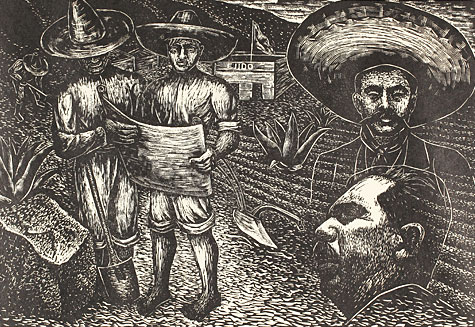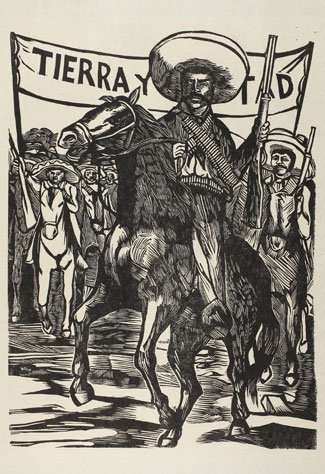
Lawrence University’s Mudd Gallery hosts the exhibition “Selections from the Estampas de la Revolución Mexicana Portfolio” beginning Thursday, Feb. 11 and running through March 11. The exhibition, located on the third floor of the Seeley G. Mudd Library, is free and open to the public.
The exhibition is part of a series of of community programs highlighting 500 years of diversity and achievement by Latino Americans through a partnership between Lawrence, the Appleton Public Library, Casa Hispana and the History Museum at the Castle.
Featuring works from Lawrence’s permanent collection, the exhibition highlights the work of artists from the Taller de Gráfica Popular — The People’s Graphic Workshop — of Mexico City. The TGP is an artists’ print collective founded to advance revolutionary social causes.
Beth Zinsli, curator and director of Lawrence’s Wriston Art Center Galleries, will deliver a gallery talk on the history and iconography of the Estampas portfolio to open the exhibition at 4 p.m. on Feb. 11.
“The portfolio as a whole attempts to chronologically narrate complex political events in Mexican history from 1876 to1947, but the prints also reveal a great deal about the lives of every day people in this period,” said Zinsli. “The exhibition features a selection of linocut prints from the portfolio that recount crucial events and themes from the Mexican Revolution period through a variety of visual strategies, including caricature, allegory and references to religious iconography and well-known works of art.”

While the exhibition features such historical figures as Porfirio Díaz, Francisco Madero, and Emiliano Zapata, it is counterbalanced by images that convey real concerns about the human condition and the denunciation of social and civil injustices.
The community-wide “Latino Americans: 500 Years of History” program is supported by a pair of grants Lawrence received from the American Library Association and the Wisconsin Humanities Council with funds from the National Endowment for the Humanities.
About Lawrence University
Founded in 1847, Lawrence University uniquely integrates a college of liberal arts and sciences with a nationally recognized conservatory of music, both devoted exclusively to undergraduate education. It was selected for inclusion in the book “Colleges That Change Lives: 40 Schools That Will Change the Way You Think About College” and Fiske’s Guide to Colleges 2016. Engaged learning, the development of multiple interests and community outreach are central to the Lawrence experience. Lawrence draws its 1,500 students from nearly every state and more than 50 countries.